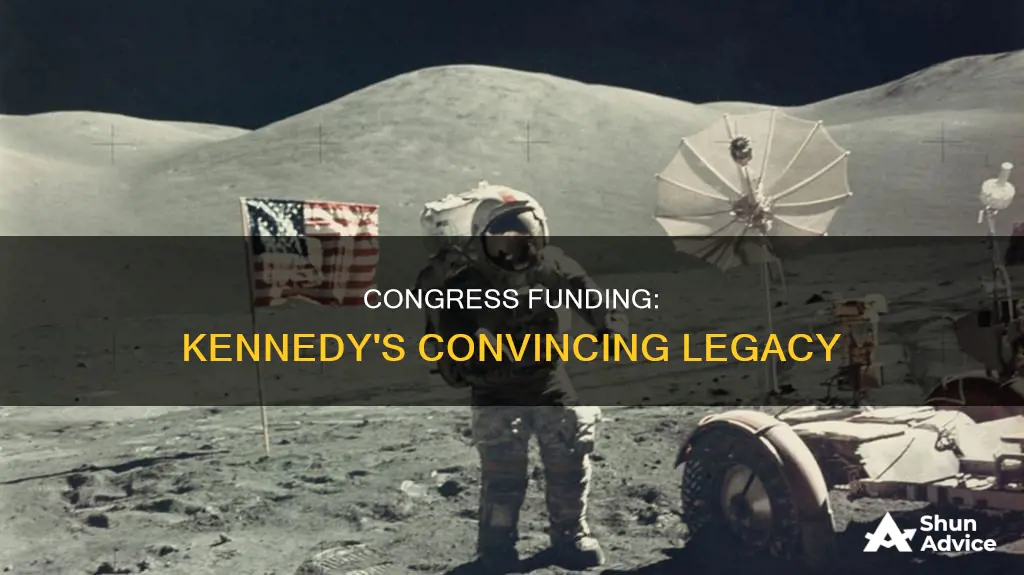
John F. Kennedy was the 35th president of the United States, serving from 1961 until his assassination in 1963. Kennedy's presidency saw high tensions with communist states in the Cold War. He increased the number of American military advisers in South Vietnam, and the Strategic Hamlet Program began during his presidency. In 1961, he authorized attempts to overthrow the Cuban government of Fidel Castro in the failed Bay of Pigs Invasion and Operation Mongoose. In October 1962, U.S. spy planes discovered Soviet missile bases had been deployed in Cuba, leading to the Cuban Missile Crisis, which nearly resulted in nuclear war.
Kennedy's domestic policies, known as the New Frontier, included a range of social and economic reforms. He expanded unemployment benefits, provided aid to cities to improve housing and transportation, and allocated funds to continue the construction of a national highway system. He also introduced a pilot food stamp program, increased the minimum wage, and extended the school lunch program.
Kennedy's foreign policies were dominated by the Cold War and the containment of communism. He established the Peace Corps and the Alliance for Progress with Latin America, and continued the Apollo program with the goal of landing a man on the Moon before 1970.
Kennedy's administration also focused on civil rights, with Kennedy supporting the civil rights movement. He appointed Thurgood Marshall, a civil rights attorney, to the U.S. Court of Appeals and signed Executive Order 10925, which required government contractors to take affirmative action to ensure equal employment opportunities regardless of race, creed, colour, or national origin.
| Characteristics | Values |
|---|---|
| Subject | Defense and space exploration |
| Reason | To increase growth and create jobs |
| Goal | To be the first country to land a man on the moon |
What You'll Learn

The Apollo program
President John F. Kennedy dedicated the Apollo Program to his national goal of landing a man on the Moon and returning him safely to Earth. In a 1961 address to Congress, Kennedy proposed:
> Now it is time to take longer strides—time for a great new American enterprise—time for this nation to take a clearly leading role in space achievement, which in many ways may hold the key to our future on Earth... I believe that this nation should commit itself to achieving the goal, before this decade is out, of landing a man on the Moon and returning him safely to the Earth. No single space project in this period will be more impressive to mankind, or more important in the long-range exploration of space; and none will be so difficult or expensive to accomplish.
The program required the largest commitment of resources ever made by any nation in peacetime: $25 billion (approximately $182 billion in 2023 US dollars). At its peak, the Apollo Program employed 400,000 people and required the support of over 20,000 industrial firms and universities.
Floating Rate Funds: A Smart Investment Strategy
You may want to see also

The Peace Corps
John F. Kennedy's Peace Corps was established in March 1961 by an executive order and was authorized by Congress in September of the same year. The Peace Corps is an independent agency and program of the United States government that trains and deploys volunteers to provide international development assistance.
The official goal of the Peace Corps is to assist developing countries by providing skilled workers in fields such as education, health, entrepreneurship, women's empowerment, and community development. Volunteers are typically American citizens with a college degree, who are assigned to specific projects in certain countries based on their qualifications and experience. They are expected to serve at least two years in the host country, during which they are strongly encouraged to respect local customs, learn the language, and live in comparable conditions.
The idea for the Peace Corps came from several sources. In 1950, Walter Reuther, president of the United Auto Workers, proposed a voluntary agency for young Americans to be sent around the world to fulfill humanitarian and development objectives. In 1957, Senator Hubert H. Humphrey, Jr. introduced the first bill to create the Peace Corps. However, it was Kennedy's extemporaneous speech at the University of Michigan in 1960 that truly sparked the creation of the Peace Corps. He challenged the students, asking how many of them were willing to spend their days in developing countries and work in the Foreign Service. The students responded enthusiastically, with a petition signed by 1,000 students willing to serve abroad.
Kennedy's brother-in-law, R. Sargent Shriver, was appointed as the first director of the Peace Corps. Shriver outlined seven steps to forming the Peace Corps in a memorandum to Kennedy in February 1961. By the time Congress approved the Peace Corps as a permanent federal agency within the State Department in September 1961, volunteers were already in the field, serving in Ghana and Tanganyika (now Tanzania).
Index Fund Investing: TD Ameritrade Guide
You may want to see also

The Alliance for Progress
John F. Kennedy's Alliance for Progress was a 10-year plan launched in 1961 to foster economic cooperation between North and South America. The main objectives of the Alliance for Progress included:
- Economic development: The plan aimed for an annual increase of 2.5% in per capita income in Latin American countries, with the goal of promoting economic growth and reducing poverty.
- Democratic governments: The charter called for the establishment and support of democratic governments in Latin America, promoting political stability and the protection of human rights.
- Education and literacy: The goal was to eliminate adult illiteracy in Latin America by 1970, recognising education as crucial for social and economic development.
- Price stability: The Alliance aimed to maintain price stability in the region, avoiding high inflation or deflation, which could hinder economic progress.
- Income distribution and land reform: The program sought to promote more equitable income distribution and land reform to address social and economic inequalities.
- Economic and social planning: Latin American countries were expected to create comprehensive plans for national development, which would be reviewed and approved by an inter-American board of experts.
- Financial commitment: The participating Latin American countries pledged a capital investment of $80 billion over 10 years, while the United States would provide or guarantee $20 billion in aid.
Despite these challenges, the Alliance for Progress produced some measurable achievements. It supported the construction of housing, schools, airports, hospitals, clinics, and water purification projects, as well as the distribution of free textbooks to students. It also saw the start of long-range reforms, with improvements in land use and distribution, slightly improved tax laws and administration, and the creation of central planning agencies.
Maximizing Your HSA: Mutual Fund Investing Strategies
You may want to see also

The Arms Control and Disarmament Agency
The US Arms Control and Disarmament Agency (ACDA) was an independent agency of the US government that existed from 1961 to 1999. Its mission was to strengthen US national security by formulating, advocating, negotiating, implementing, and verifying effective arms control, nonproliferation, and disarmament policies, strategies, and agreements.
The ACDA ensured that arms control was fully integrated into the development and conduct of US national security policy. It also conducted, supported, and coordinated research for arms control and disarmament policy formulation. The agency prepared for and managed US participation in international arms control and disarmament negotiations and systems.
In the 1970s, the agency focused on gaining an understanding of the strategic weapons capabilities of the Soviet Union and the People's Republic of China. The US expanded its electronic reconnaissance capability through federal agency research and private contract research, utilizing radio frequency and optical technologies. The theory behind this mission was that a clearer understanding of other nations' strategic capabilities was an important initial step in preventing nuclear war.
The ACDA was established by the Arms Control and Disarmament Act, enacted on September 26, 1961. Its predecessor was the US Disarmament Administration, which was part of the US Department of State from 1960 to 1961. The directors of the Arms Control and Disarmament Agency included William Chapman Foster, Gerard C. Smith, Fred Iklé, Paul Warnke, George M. Seignious, Ralph Earle, Eugene V. Rostow, James L. George, Kenneth Adelman, William F. Burns, Ronald F. Lehman, and John D. Holum.
In 1997, the Clinton administration announced the partial integration of the ACDA with the State Department as part of a reorganization of foreign policy agencies. Finally, on April 1, 1999, the ACDA was abolished, and its functions were merged into the Department of State.
ULIP vs Mutual Funds: Where Should You Invest Your Money?
You may want to see also

The Food for Peace program
John F. Kennedy's administration revitalized the U.S. foreign assistance program, reflecting a growing awareness of the importance of humanitarian aid as a form of diplomacy and reinforcing the belief that American security was linked to the economic progress and stability of other nations. Kennedy sought to improve the administration of U.S. assistance and refocus aid to meet the needs of the developing world.
In 1961, Kennedy appointed George McGovern as his Food for Peace Director, a position within the Executive Office of the President. Kennedy tasked McGovern with supervising and coordinating the functions of the various agencies administering the program, including the Agency for International Development (AID), the Department of State, and the Department of Agriculture. Kennedy directed McGovern to use "agricultural abundance" to combat malnutrition and insisted that the United States must "narrow the gap between abundance here at home and near starvation abroad."
By the end of 1961, the Food for Peace program was operating in a dozen countries, and 10 million more people had been fed with American surplus than the year before. In February 1962, McGovern visited India and oversaw an expanded school lunch program that subsequently fed one in five Indian schoolchildren. By mid-1962, 35 million children around the world were benefiting from the program.
The Food for Peace Act of 1966 (PL 89-808) revised the basic structure of the program and placed a clear emphasis on its humanitarian goals. The policy statement shifted from surplus disposal to planned production for export to meet world food needs.
Mutual Funds: How Much Investment is Too Much?
You may want to see also







